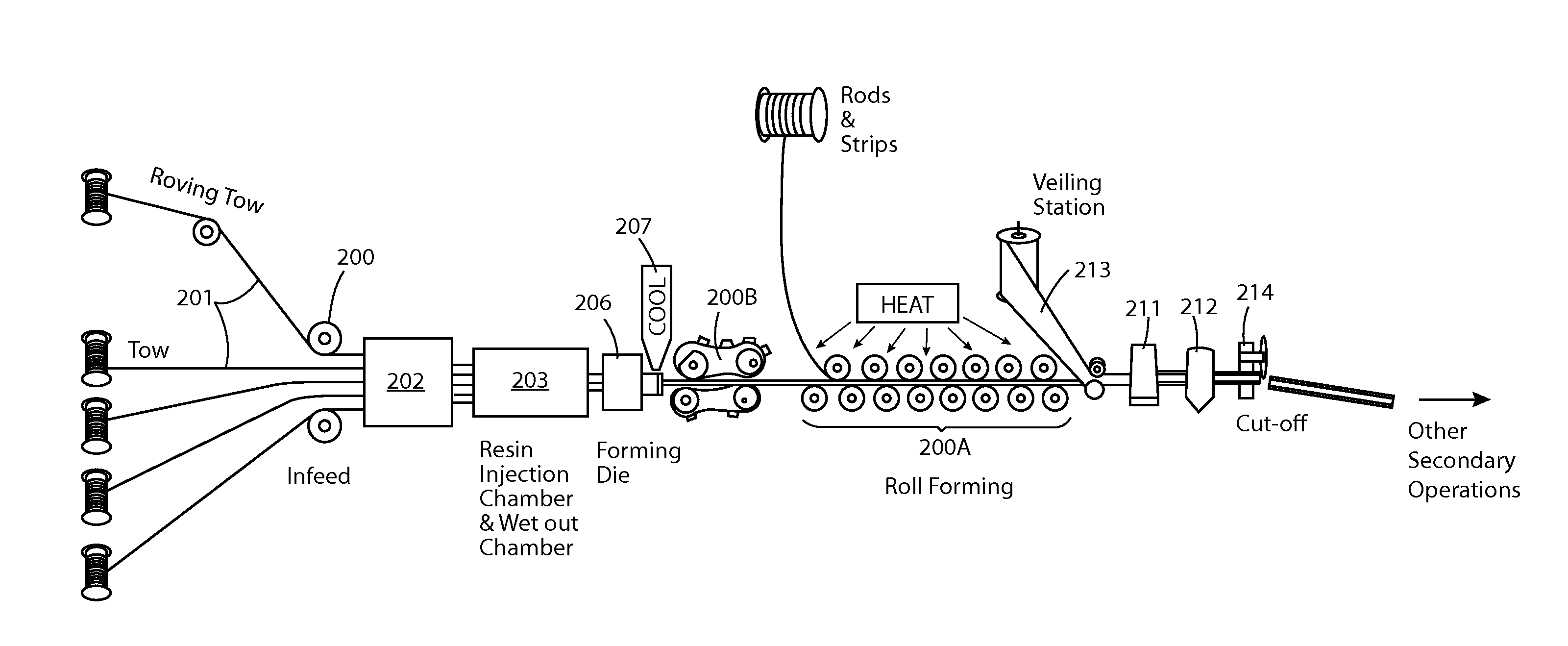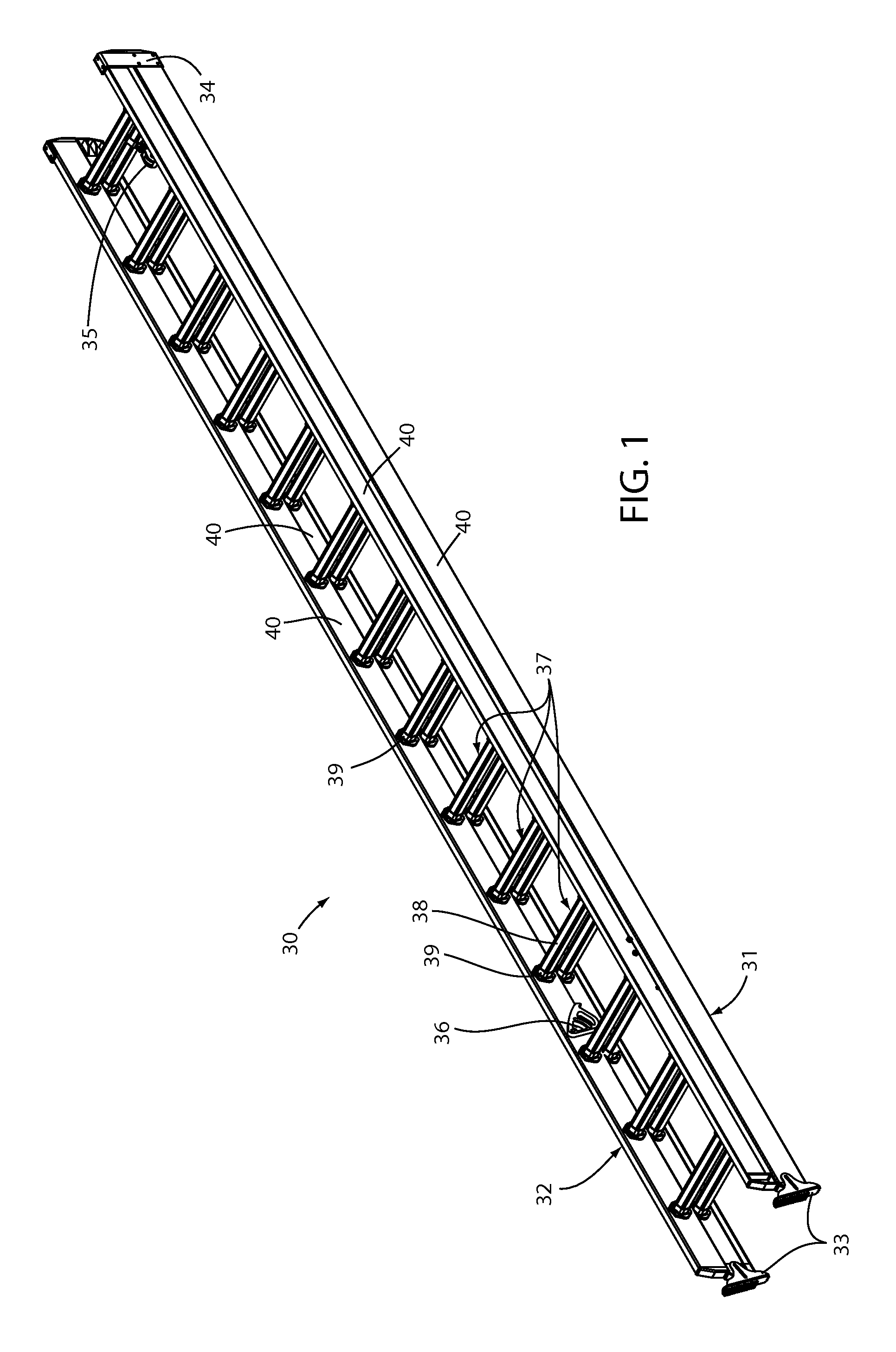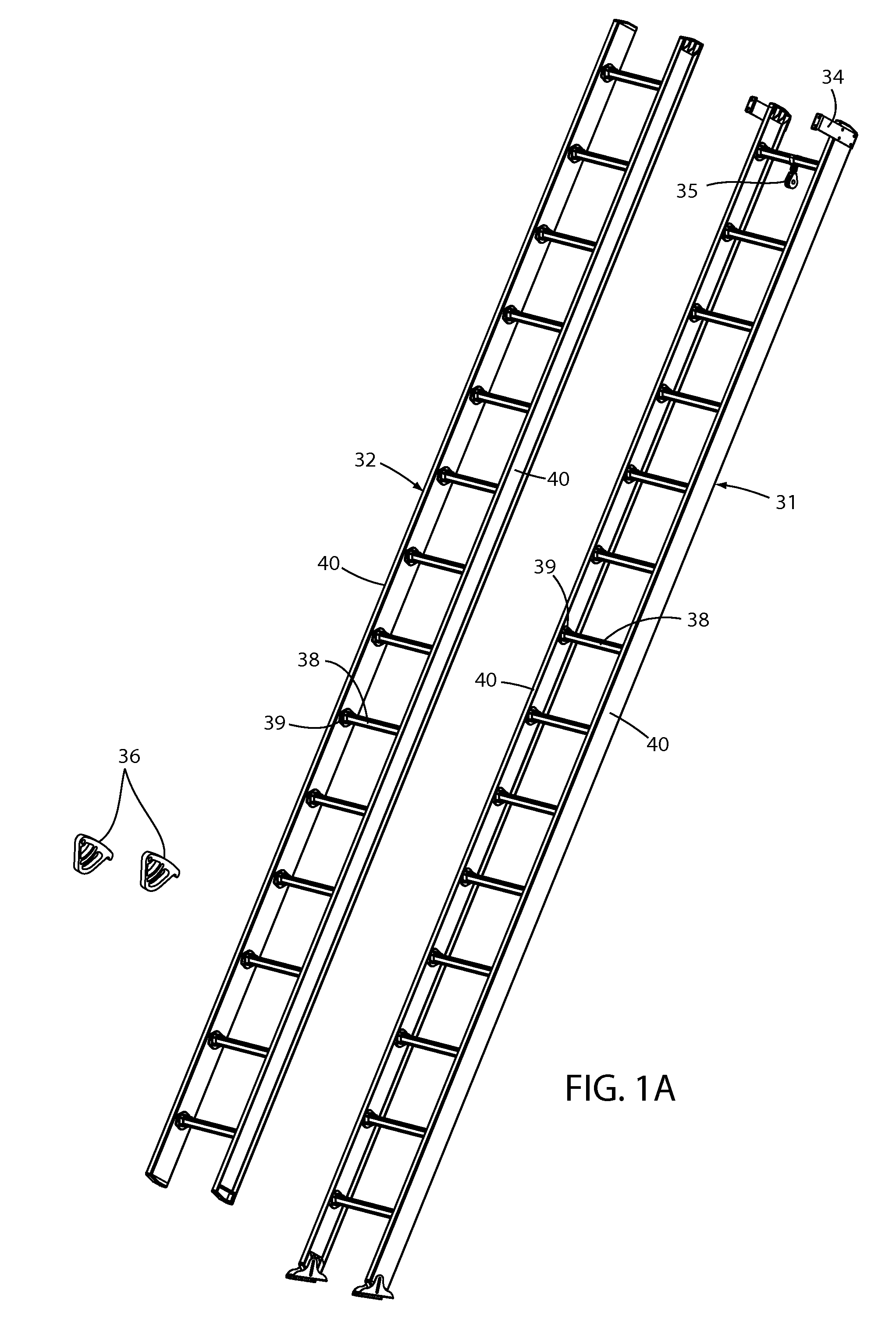Thermoplastic pultruded process and related products
a technology of pultruded process and thermoplastic, which is applied in the direction of cellulosic plastic layered products, instruments, manufacturing tools, etc., can solve the problems of reducing affecting the bending strength of the ladder, so as to improve the bending strength, and save weight
- Summary
- Abstract
- Description
- Claims
- Application Information
AI Technical Summary
Benefits of technology
Problems solved by technology
Method used
Image
Examples
Embodiment Construction
[0058]The present apparatus 30 (FIG. 1) is a heavy-duty extension ladder that includes a base ladder 31 (FIG. 1A) and an extension (fly) ladder 32 telescopingly attached thereto. The base ladder 31 includes a pair of feet 33 at its bottom for non-slip engagement with a ground surface, and includes guide brackets 34 at its top for guiding extension of the fly ladder 32, as well as includes a pulley 35 and pull cord (not shown) for pull-cord extension of the fly ladder 32. Rung locks 36 are provided for locking a selected extended position of the fly ladder 32 on the base ladder 31. The ladder 31 (and ladder 32) includes rung assemblies 37 (FIGS. 1B-1D) extending between side rails 40 of the ladder 31 (and 32), the rung assemblies 37 including linear tubular rungs 38 (metal or composite) and rung-securing end connectors 39. It is noted that a leveler may be added to a bottom of the base ladder 31, such as is shown in FIGS. 31-35 and in U.S. application Ser. No. 14 / 242,311, filed Apr. ...
PUM
| Property | Measurement | Unit |
|---|---|---|
| weight | aaaaa | aaaaa |
| weight | aaaaa | aaaaa |
| friction fit | aaaaa | aaaaa |
Abstract
Description
Claims
Application Information
 Login to View More
Login to View More - R&D
- Intellectual Property
- Life Sciences
- Materials
- Tech Scout
- Unparalleled Data Quality
- Higher Quality Content
- 60% Fewer Hallucinations
Browse by: Latest US Patents, China's latest patents, Technical Efficacy Thesaurus, Application Domain, Technology Topic, Popular Technical Reports.
© 2025 PatSnap. All rights reserved.Legal|Privacy policy|Modern Slavery Act Transparency Statement|Sitemap|About US| Contact US: help@patsnap.com



